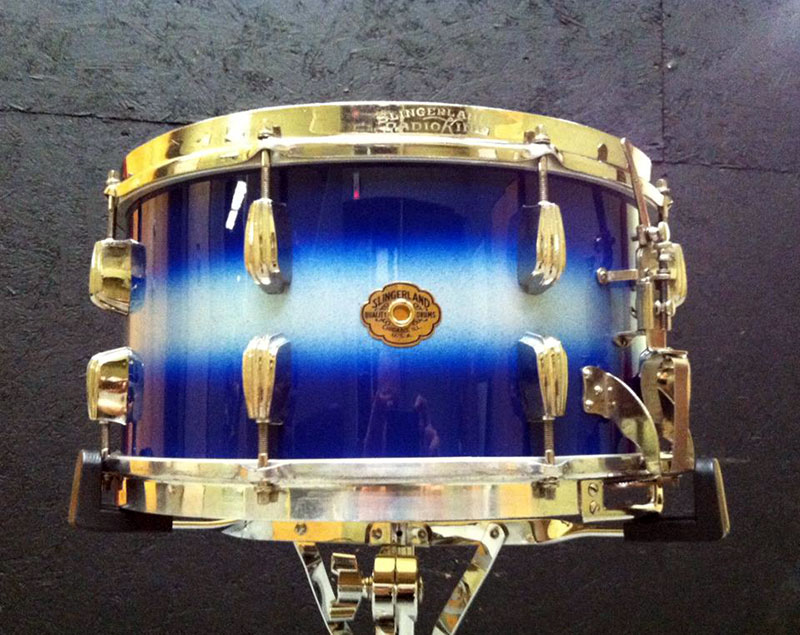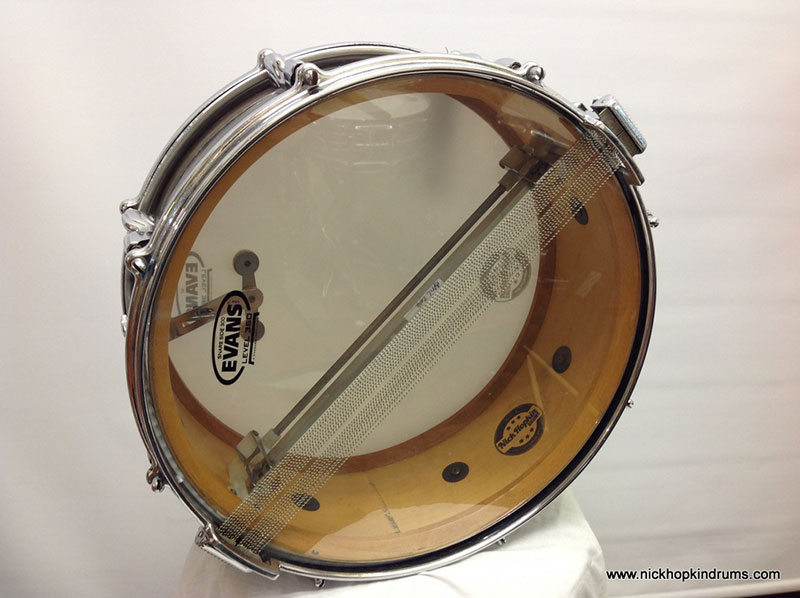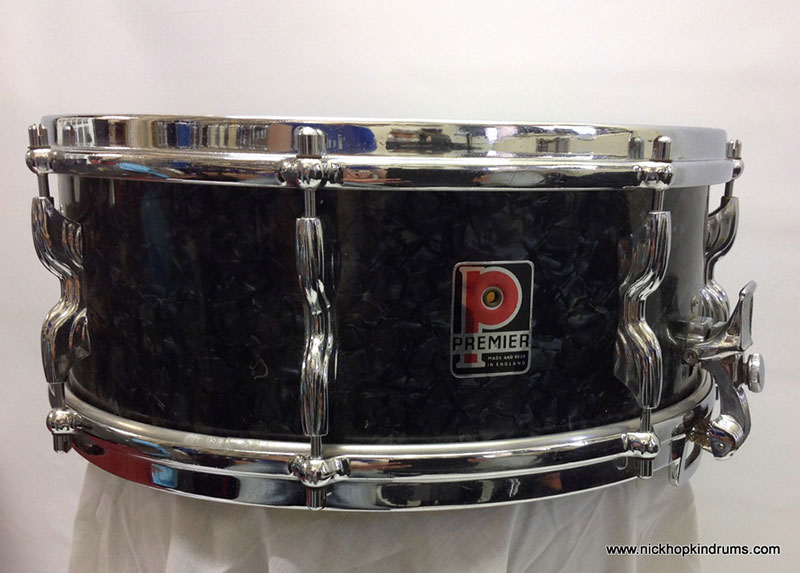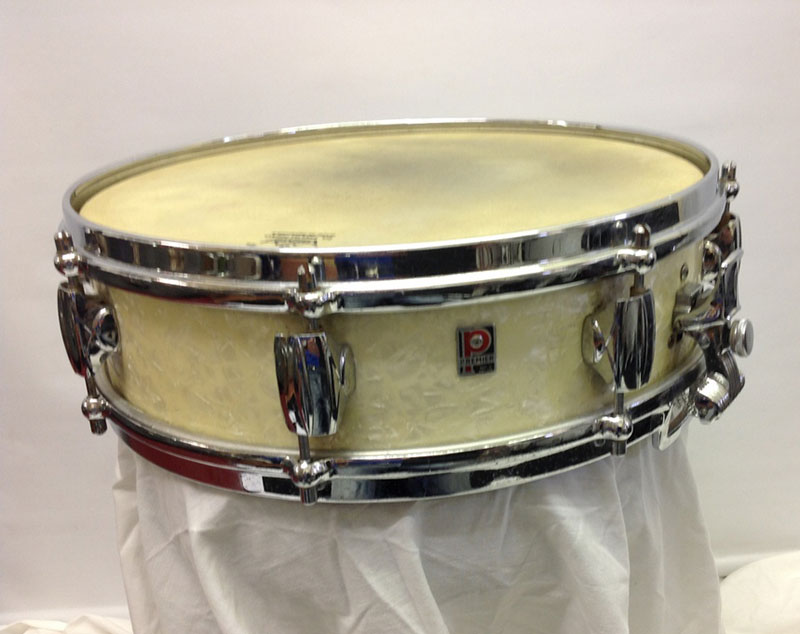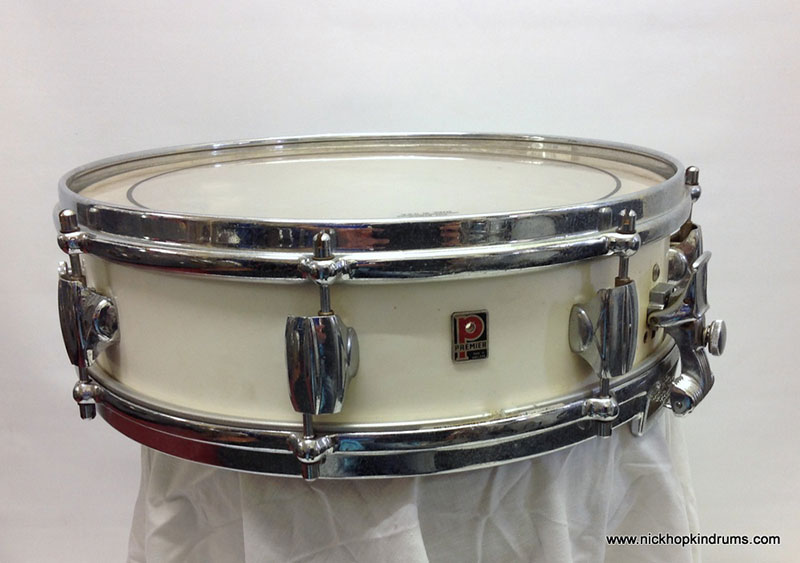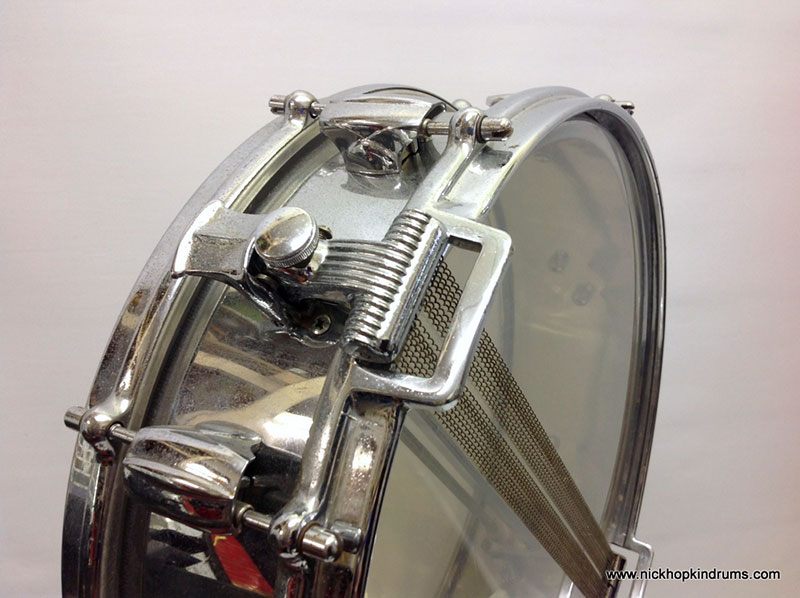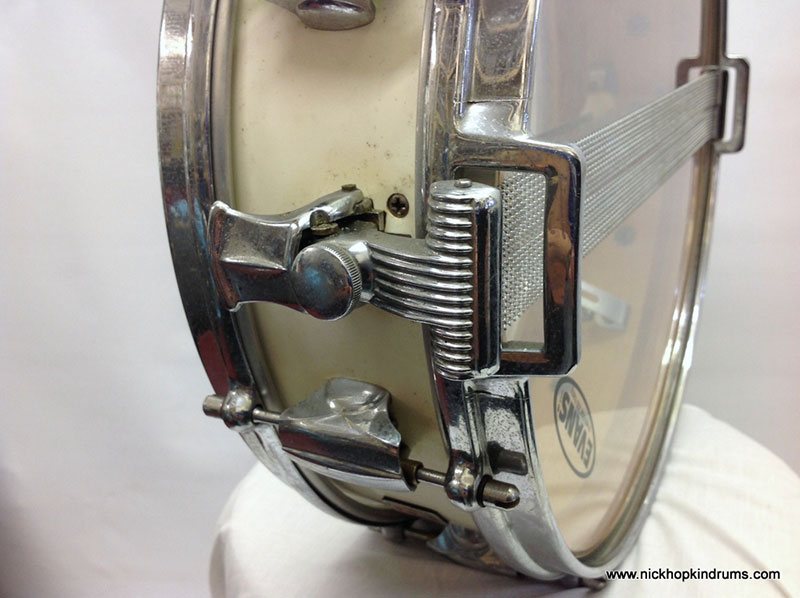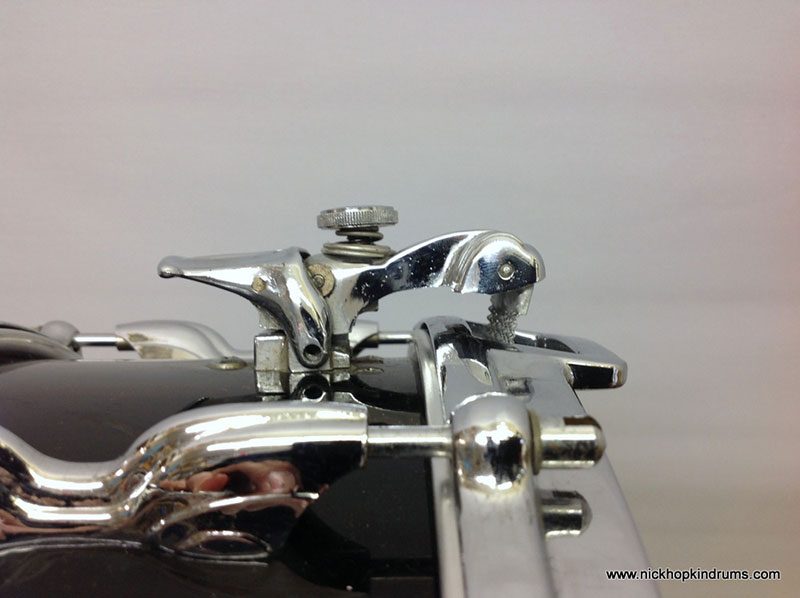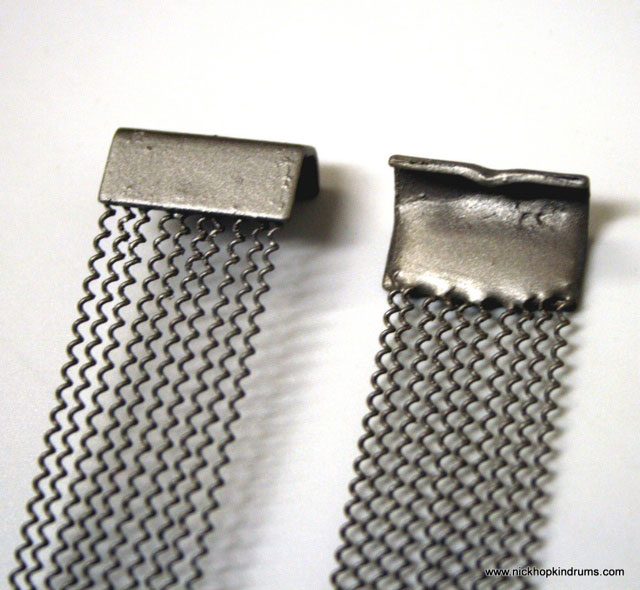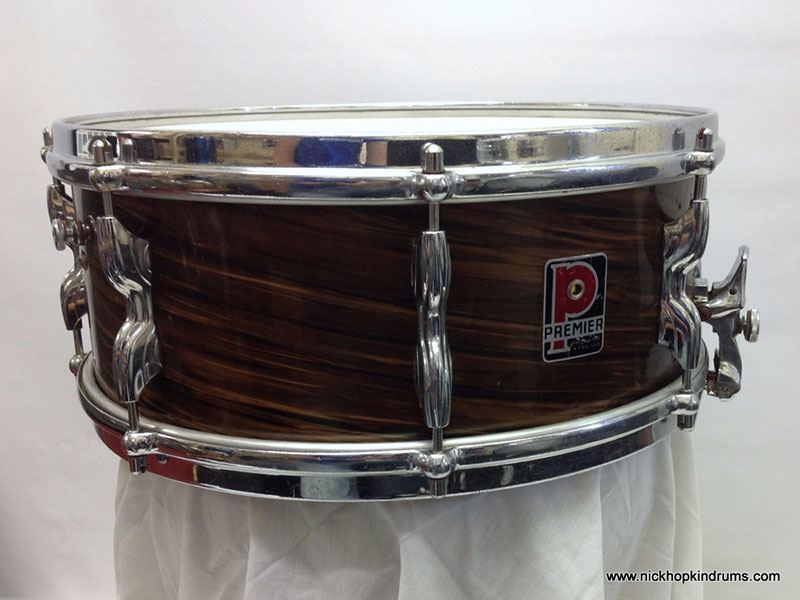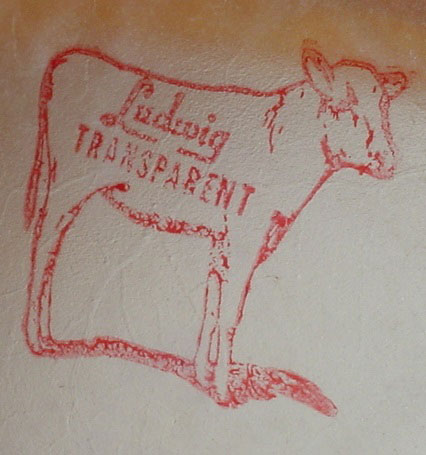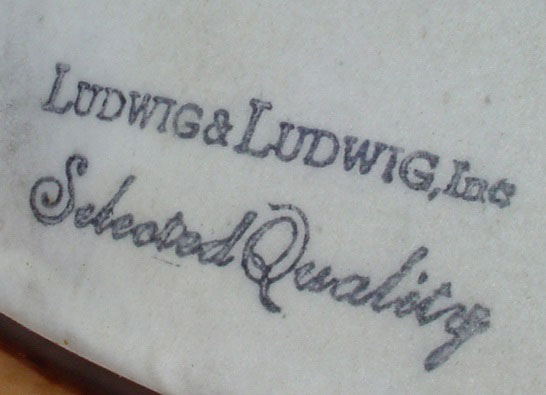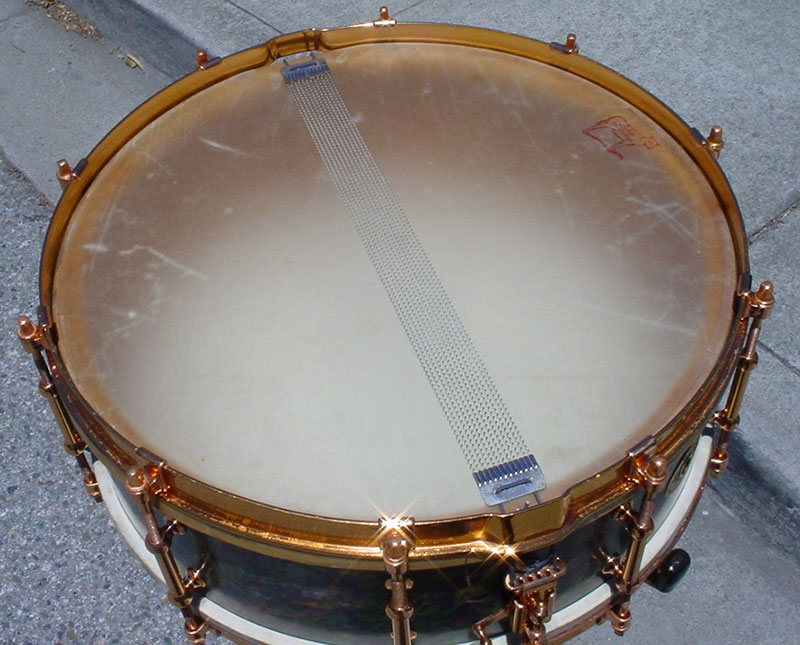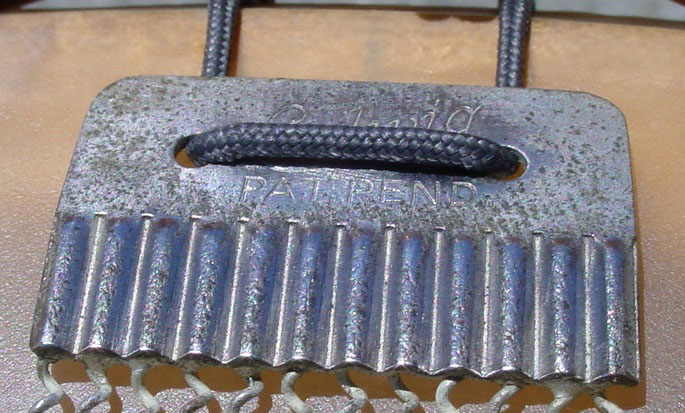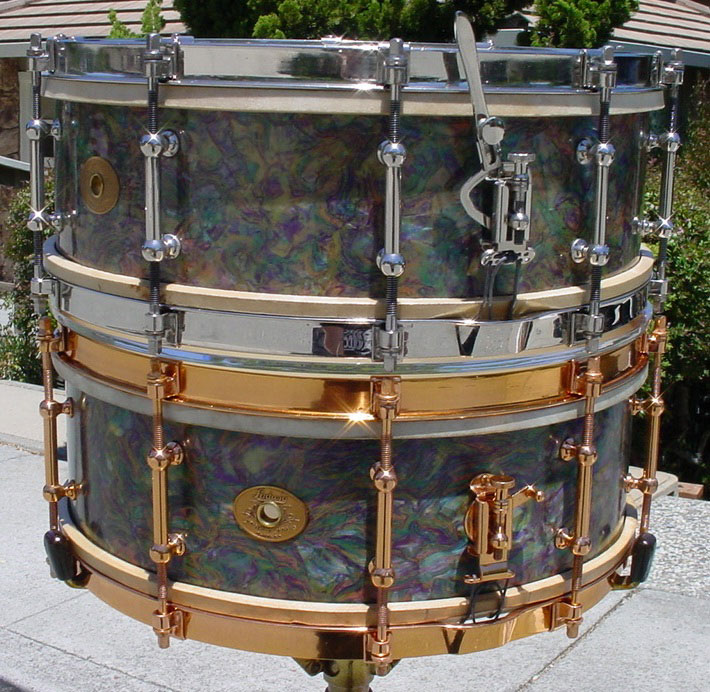Let me explain this further; a central bar inside the shell moves up and down when the snare lever is thrown on or off. The snare wires themselves extend further than the diameter of the drum, and clip onto a small bar at each end (two ten strand wires, called the double ten).Wire tension is adjusted via a knob at each end. Why so complex, I hear you say? Well, by the wires extending further than the diameter of the drum, good response is ensured due to contact with the shell at both ends. The catalogues from that time boast that “unwanted snare buzz is totally eliminated” and that it “brings snare response to a new high level”.
The drum was also available in a 4” model with offset lugs as well as chrome over brass shell. Both these are rarer than the 5.5” shell that appears to have been the most common.
Most mid to late 60s Premier kits would have come with a Royal Ace snare drum, so they seem to be in abundance in the UK.
Unfortunately the wires are no longer in production by Premier and many drums have had the parallel mechanism stripped out and replaced with a standard throw. I have, however, a British company currently making replica wires for these drums in small runs that fit perfectly and sound great too. You can get that real backbeat crack out of them, with the die cast hoops drying the sound compared to triple flanged. With the wires loosened off a little, this snare is perfect for jazz and a more sensitive sound.
Many Premier players have a Royal Ace in their collection, although by the number of enquiries I receive, many are searching for replacement wires. If you’ve held onto one for a while with the hope of giving it a new lease of life, now’s the time while wires are available again! If you’ve never played one, then I’d urge you to try one out – in my opinion one of the best wooden British snare drums made.
Expect to pay $350 for a drum in good condition complete with wires.



